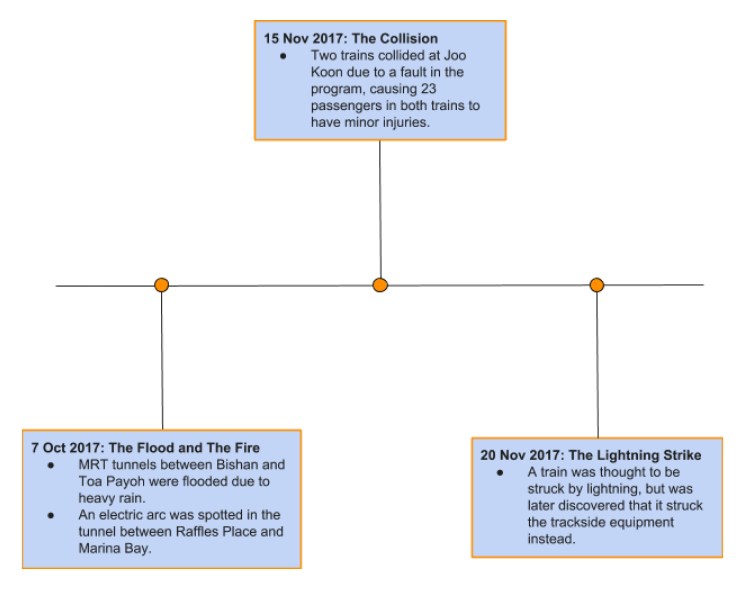
BLOG | 3 MIN READ
BIGGEST LESSON LEARNT FROM THE SMRT SAGA

In case you’ve lost track (see what we did there) of the recent happenings with SMRT, here’s a brief timeline of the ‘major’ incidents:

These are only the ‘major’ incidents. Train delays have been so common (so much so that a wikipedia page exists solely for the ‘List of Singapore MRT disruptions’) that no one bats an eye anymore (and maybe roll their eyes instead). In November alone, there were multiple train delays on eight days, complete suspensions of service (Tuas West Extension) on two days (and beyond). Beneath these apparent problems, lies an underlying problem that SMRT CEO Desmond Kuek pointed out himself: “deep-seated cultural issues” within the company are partly to blame for train disruptions.
In other words, the lack of employee engagement resulted in the lack of maintenance of the train infrastructure.
Take for example, the flooding incident. Investigations found that the team of six from the Building and Facilities maintenance group is responsible for maintaining flood-prevention devices. However since December 2016, the prescribed quarterly maintenance work have not been carried out, yet the records showed otherwise.
This goes to show how a huge impact that affects the whole nation stems from every individual’s responsibility. If each team player has the right attitude and plays his or her role well, these incidents could have been prevented.
Previously, we wrote an article on why investing in team building is important to an organisation. It is not about spending huge resources to organise mega events to achieve the goal of building a cohesive team. What is important is about having a shared experience, especially one that puts the participants slightly out of their comfort zone. This would allow bonding to happen naturally and effectively. Creating a regular platform for the senior management to communicate their vision, their organisational goals and getting everyone to be on the same direction are the key essentials of employee engagement.
The success of building a cohesive team can be seen in various ways over time; Employees are happy and engaged; Teams collaborate and help one another; Organisation cultivates a good company culture and does consistently well.
Perhaps it’s time for SMRT and all other organisations to relook into the organisation’s and its members’ values are aligned to ensure that goals can be met. Only then will the company be able to grow and prosper.


